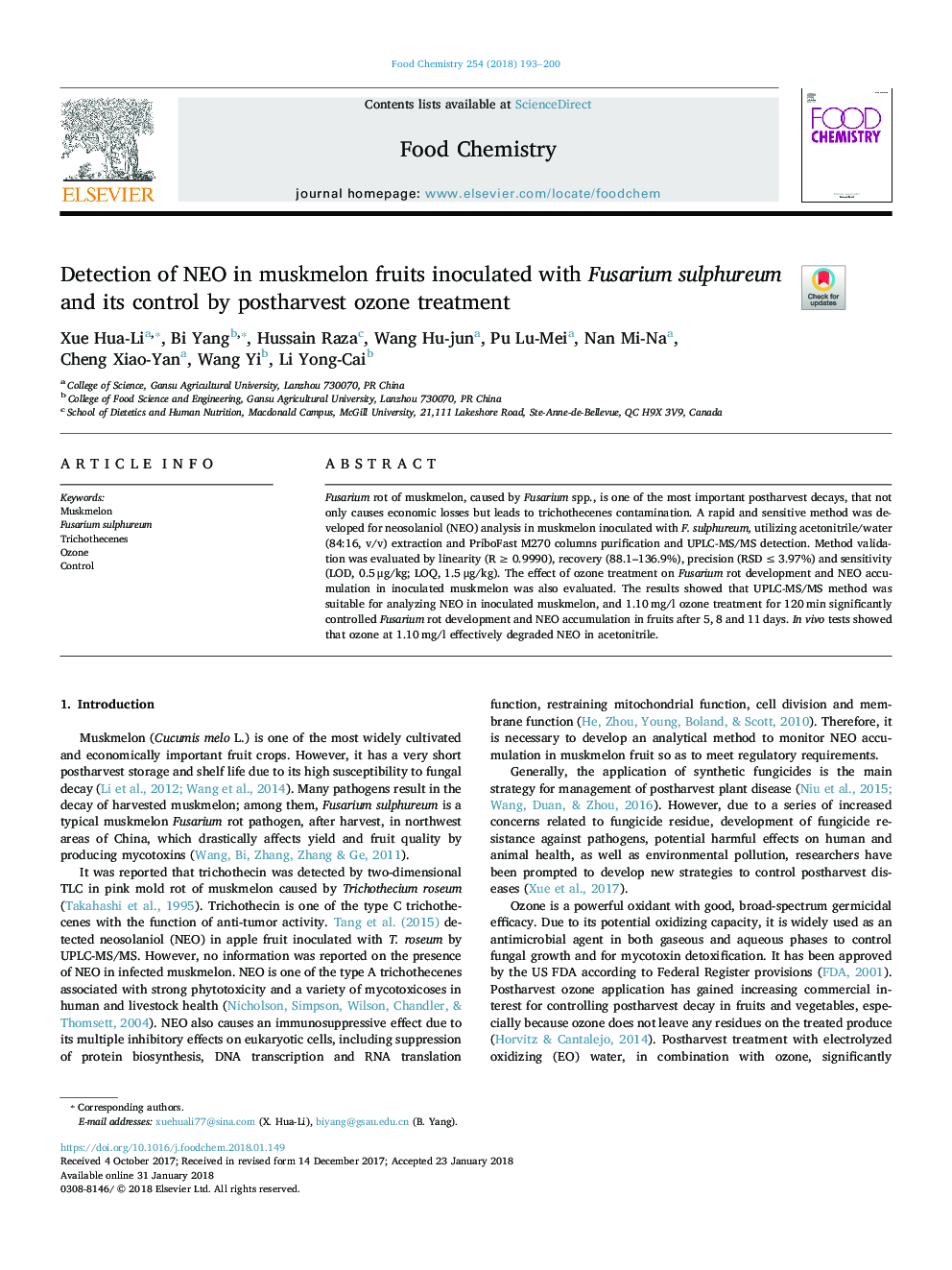| Article ID | Journal | Published Year | Pages | File Type |
|---|---|---|---|---|
| 7585469 | Food Chemistry | 2018 | 8 Pages |
Abstract
Fusarium rot of muskmelon, caused by Fusarium spp., is one of the most important postharvest decays, that not only causes economic losses but leads to trichothecenes contamination. A rapid and sensitive method was developed for neosolaniol (NEO) analysis in muskmelon inoculated with F. sulphureum, utilizing acetonitrile/water (84:16, v/v) extraction and PriboFast M270 columns purification and UPLC-MS/MS detection. Method validation was evaluated by linearity (Râ¯â¥â¯0.9990), recovery (88.1-136.9%), precision (RSDâ¯â¤â¯3.97%) and sensitivity (LOD, 0.5â¯Î¼g/kg; LOQ, 1.5â¯Î¼g/kg). The effect of ozone treatment on Fusarium rot development and NEO accumulation in inoculated muskmelon was also evaluated. The results showed that UPLC-MS/MS method was suitable for analyzing NEO in inoculated muskmelon, and 1.10â¯mg/l ozone treatment for 120â¯min significantly controlled Fusarium rot development and NEO accumulation in fruits after 5, 8 and 11â¯days. In vivo tests showed that ozone at 1.10â¯mg/l effectively degraded NEO in acetonitrile.
Keywords
Related Topics
Physical Sciences and Engineering
Chemistry
Analytical Chemistry
Authors
Xue Hua-Li, Bi Yang, Hussain Raza, Wang Hu-jun, Pu Lu-Mei, Nan Mi-Na, Cheng Xiao-Yan, Wang Yi, Li Yong-Cai,
